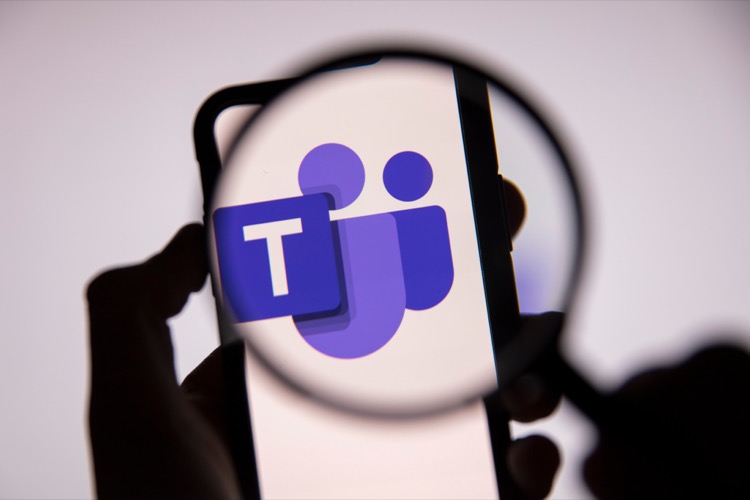
Collaboration Using Microsoft Teams Shared Channels
A Microsoft MVP 𝗁𝖾𝗅𝗉𝗂𝗇𝗀 develop careers, scale and 𝗀𝗋𝗈𝗐 businesses 𝖻𝗒 𝖾𝗆𝗉𝗈𝗐𝖾𝗋𝗂𝗇𝗀 everyone 𝗍𝗈 𝖺𝖼𝗁𝗂𝖾𝗏𝖾 𝗆𝗈𝗋𝖾 𝗐𝗂𝗍𝗁 𝖬𝗂𝖼𝗋𝗈𝗌𝗈𝖿𝗍 𝟥𝟨𝟧
Unlock the power of collaboration using Microsoft Teams Shared Channels – enhance connectivity, boost productivity.
In this informative YouTube video, Microsoft MVP Daniel Anderson discusses the potency of Shared Channels in Microsoft Teams, demonstrating how they can enhance your collaborative efforts. A shared channel, as described in the video, is a platform designed for focused, exclusive collaborative work involving specific team members. This limit extends even to individuals outside your primary team members, forming an unique, effective zone for teamwork.
Entry into these shared channels is through invitation only, ensuring that only involved parties have access. Azure AD B2B direct connect enables you to incorporate external collaborators smoothly into your shared channels. However, one must note the inflexible nature of these channels - once they are linked to a parent team, they cannot be converted into standard channels. To learn more, you can visit the detailed guide at here
The video also illustrates how to engage with other Microsoft 365 organizations in shared channels. Specifically, enabling Direct Connect for Business-to-Business (B2B) for every organization you plan to join forces with. Also, your organization's custom applications are accessible, and external partners can avail them in shared channels.
For initiation of collaboration with external parties, certain prerequisites, among them guest access activation for SharePoint and Microsoft 365 Groups are needed. Also, both Microsoft 365 Groups sharing and SharePoint organization level and site level sharing settings should be enabled for guests. Any domains being shared with must not be blocked. Furthermore, interaction between Commercial and GCC clouds is not backed in the shared channels.
For users to meet and collaborate effectively in Teams, certain configurations are necessary. Among these are authorizing team owners to generate and share shared channels, or letting users join external shared channels. Precise steps to accomplish this are accessed here
Enabling external access is a key requirement for external channel participants to engage in meetings. This also aids in observing the presence of external participants in the channel. among other configurations and settings, which are explained meticulously.
The main topic of Shared Channels lies at the heart of Microsoft Teams, serving to improve and organize collaborations between different parties, including external ones. It's essentially a place meant for specific members to collaborate effectively on means to be achieved. By restricting access to invited members only, it ensures a streamlined and focused group working together without interference. The existence of these channels promotes efficiency and productivity in any working environment.
Demystifying Teams Shared Channels
These channels are a powerful tool within Microsoft's arsenal, designed specifically to enhance collaborative workflows. The strength lies in creating an exclusive circle of collaborators, both internal and external, ensuring only relevant members have access. In a rapidly digitalizing world, such tools are proving to be indispensable to modern businesses.

Learn about Maximizing Collaboration with Microsoft Teams Shared Channels
The popular video-sharing platform, YouTube, hosts a variety of informative content on many subjects. If you are interested in deciphering the depth of Microsoft-related videos, specifically, on a feature such as 'Microsoft Teams Shared Channels', then this guide will help you.
Microsoft Teams Shared Channels are effective tools for enhancing collaboration among a defined group of members. They are exclusive areas designed to facilitate collaborations and discussions, even beyond the primary team. Also, they offer the advantage of engaging external partners via Azure AD B2B direct connect. They are static, meaning their functionalities stay constant and cannot be altered into standard channels.

Seeing them as a VIP lounge for concentrated cooperation can make it easier to understand their significance. They are perfect for removing barriers between different teams potentially boosting productivity.
But before the shared channels can be used, certain prerequisites must be met. A crucial among these is that guest access should be switched on for both SharePoint and Microsoft 365 Groups. If your organization modified these default settings, they need to be re-enabled before setting up shared channels.
Also, SharePoint sharing settings, both at the organization and site level, must permit guest access and the domains you are collaborating with should not be blocked. Shared channels are usually enabled by default in Teams. Nonetheless, it's advisable to check and confirm the settings.
Following the configuration of shared channels, you have to grant permissions to team owners to create shared channels, invite external users, and allow attendees to join shared channels from other organizations. External participants can enter meetings and their presence can be noted in the channel, only if external access is enabled.
Providing your internal process for requesting new external organizations can be helpful so that all users that want to invite external members to a common channel can find necessary information. Also, both organizations must have set up an organization relationship in Azure AD B2B direct connect to facilitate this.
By empowering your users with the knowledge of Microsoft Teams Shared Channels, you can enhance their productivity and collaboration. Consequently, you help your organization to move one step ahead towards a more efficient working model.
More links on about Maximizing Collaboration with Microsoft Teams Shared Channels
- Using Shared Channels (Teams Connect) for External ...
- Jan 2, 2023 — Not supported in Class Teams. For more details see Shared channels in Microsoft Teams. Potential Benefits for External Collaboration. Shared ...
- Shared channels in Microsoft Teams
- Aug 15, 2023 — You might want to use a shared channel if you want to collaborate with a group of people who are all members of different teams. For example, ...
Keywords
Microsoft Teams Collaboration, Shared Channels Usage, Improve Collaboration Microsoft Teams, Microsoft Teams Shared Channels, Enhancing Teamwork Microsoft Teams, Utilize Shared Channels, Maximize Microsoft Teams, Teams Shared Channels Efficiency, Microsoft Teams Communication Boost, Microsoft Teams Channel Optimization